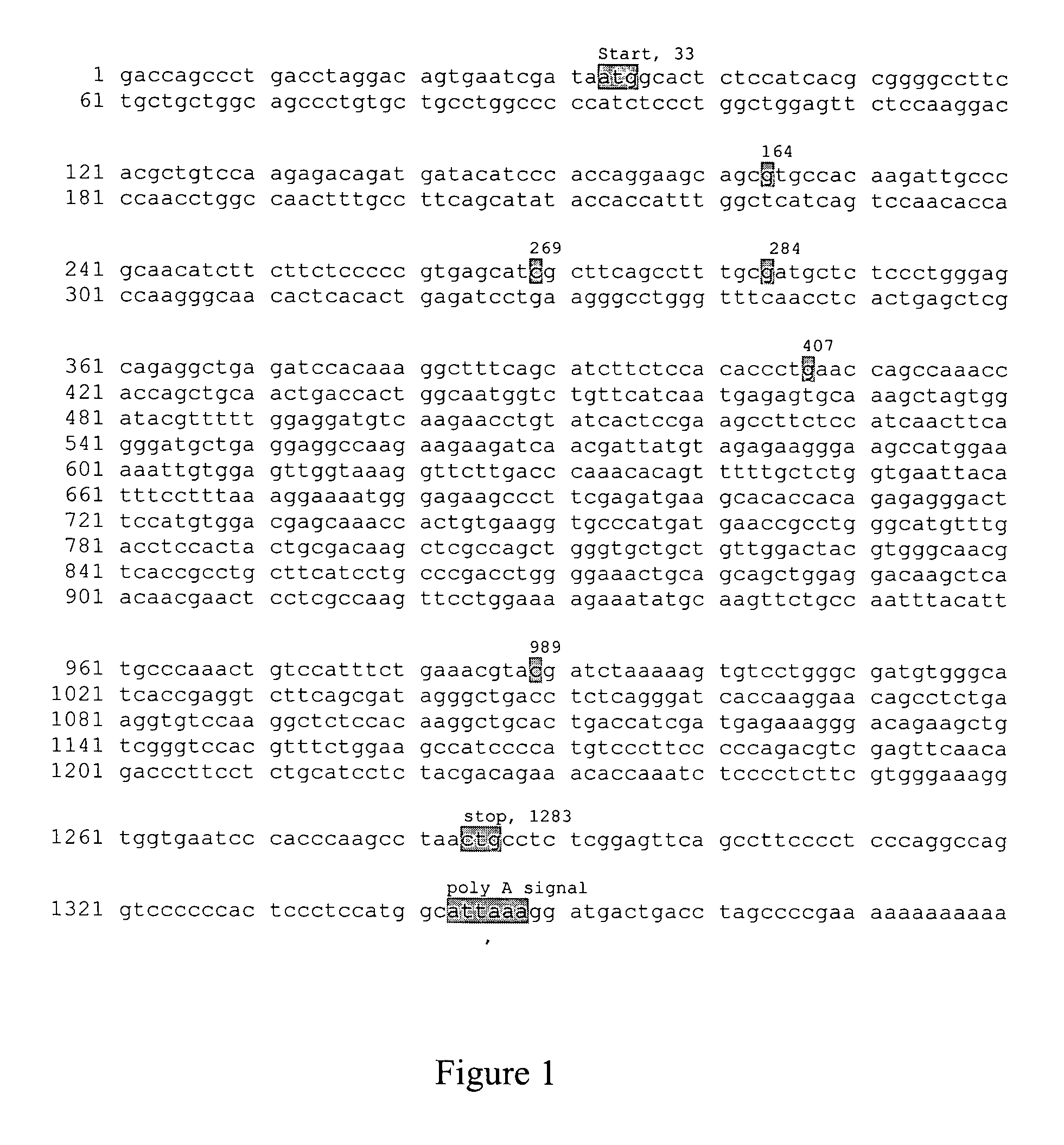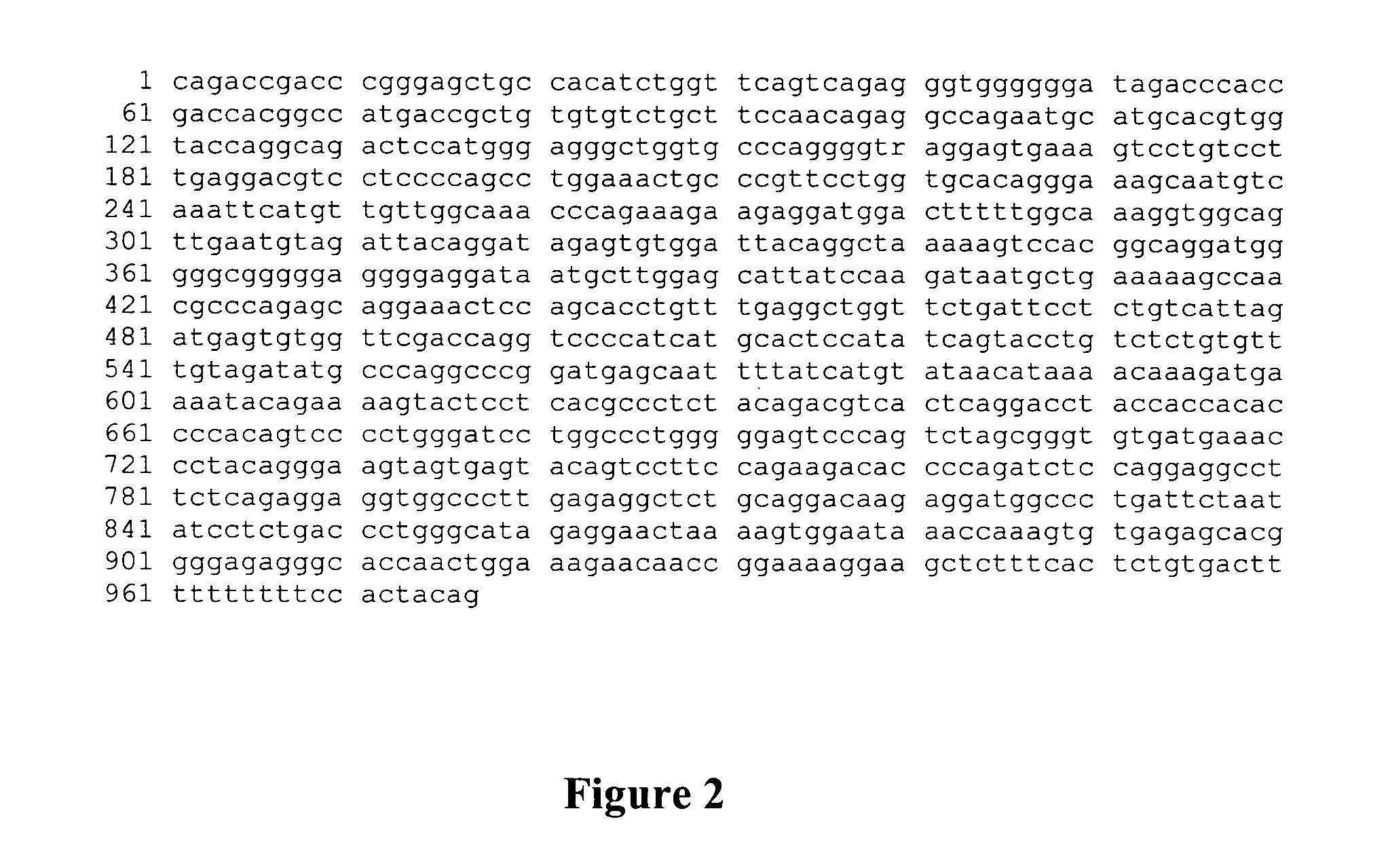Methods and compositions for genetically detecting improved milk production traits in cattle
a technology of milk production traits and compositions, applied in the field of cattle progeny testing, can solve the problems that selection based purely on phenotypic characteristics does not efficiently take into account genetic variability, and achieves low somatic cell score, high milk protein percentage, and high production life.
- Summary
- Abstract
- Description
- Claims
- Application Information
AI Technical Summary
Benefits of technology
Problems solved by technology
Method used
Image
Examples
example 1
Identification of Haplotypes and Determination of Their Association with Milk Production Traits
Resource Population and Phenotypic Data
[0055] The Cooperative Dairy DNA Repository (CDDR) is an extension of the Dairy Bull DNA Repository (DBDR) started at the University of Illinois in 1993. The DBDR was established to identify QTL in large Holstein families using the granddaughter design (Weller et al. 1990). In the granddaughter design, QTL are mapped using genotypes from grandsires and their sons and the granddaughters' phenotypic values as the trait endpoints. QTL can be mapped and markers flanking the QTL can be identified. Once flanking markers have been identified, marker-assisted selection can be utilized to shorten the generation interval and reduce time and cost of progeny testing.
[0056] Thirty seven (37) half-sib families comprised of 2,363 sons were selected from the CDDR collection for quantitative trait gene (QTG) detection using the granddaughter design. Data for Predi...
example 2
Experimental Design for Identification of Haplotypes
[0078] The following is exemplifies experimental designs for determining haplotypes of a sample. Genomic DNA from the sample may be first amplified via PCR with primers PI9, PI10 followed with restriction enzyme RsaI. This enzyme digests C allele only at position 989, so that TT products would not be digested, while CT and CC products would be digested.
[0079] Haplotype 1 can then be differentiated from 2 and 3 by specific primer amplification at position 164, by designing a primer that ends with A or G.
[0080] Haplotype 2 can be differentiated from 3 by specific primer amplification at position 269 or 285.
[0081] Haplotype 6 can be differentiated from 4 and 5 by position 164.
[0082] Haplotype 4 can be differentiated from 5 by positions 269 and 285.
TABLE 3Comparison of Various Traits Between Haplotype 1 (TT) and Other HaplotypesANOVAContrastRegressionanalysisMean / genotypeanalysisanalysisTraitPTTCTCCTT vs. othersCC vs. otherspPTA...
PUM
| Property | Measurement | Unit |
|---|---|---|
| Crystal polymorphism | aaaaa | aaaaa |
Abstract
Description
Claims
Application Information
 Login to View More
Login to View More - R&D
- Intellectual Property
- Life Sciences
- Materials
- Tech Scout
- Unparalleled Data Quality
- Higher Quality Content
- 60% Fewer Hallucinations
Browse by: Latest US Patents, China's latest patents, Technical Efficacy Thesaurus, Application Domain, Technology Topic, Popular Technical Reports.
© 2025 PatSnap. All rights reserved.Legal|Privacy policy|Modern Slavery Act Transparency Statement|Sitemap|About US| Contact US: help@patsnap.com


